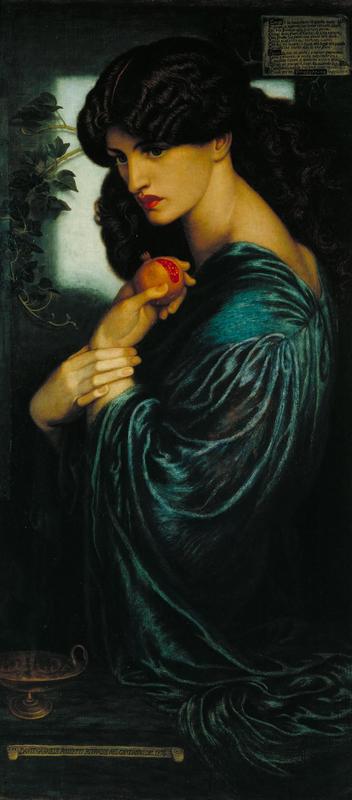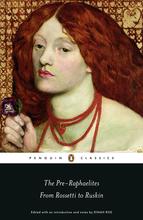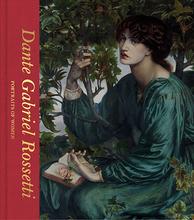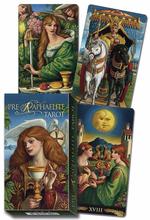More about Proserpine
- All
- Info
- Shop

Contributor
Proserpine by Dante Gabriel Rossetti is both a painting depicting the Roman myth of Proserpine (aka Persephone) but is also a not so subtle reference to some Pre-Raphaelite drama.
The myth of Proserpine, the daughter of Ceres (aka Demeter), begins with her betrothal to Pluto (aka Hades) by her father Jupiter (aka Zeus). Jupiter decides not to fill Proserpine or her mother in on the good news so one day, out of nowhere, Proserpine is kidnapped by Pluto. This went over like a ton of bricks and Ceres flipped out. She demanded the Jupiter bring Proserpine back to earth. Jupiter, who probably realized his folly, but as the god of literally everything couldn’t completely back down or it would ruin his street cred, said that Proserpine could come back as long as she didn’t eat anything down in the underworld. Random, but okay. The hitch is that Proserpine ate exactly six pomegranate seeds. Jupiter compromises and agrees to allow Ceres to have her daughter on earth for six months out of the years. The other six she has to spend with Pluto in the underworld, which is a huge bummer.
This painting depicts a moment when the underworld is lit up for a moment by earth. Proserpine has a pensive and intense look on her face, probably cursing her father for sticking her down there. She is also holds a juicy-looking pomegranate, a symbol of captivity and marriage, and the unlucky fruit that made it so she couldn’t go home forever. By the look on her face, Proserpine is less than pleased with her situation. And neither was the model for this painting, Jane Morris, wife of fellow Pre-Raphaelite Brotherhood member, William Morris. Through the course of their lives, Jane and Rossetti engaged in a decades-long affair. Apparently William Morris wasn’t the warmest guy so Jane had to outsource for love. It probably wasn’t great that she chose one of her husband’s colleagues, but the heart wants what it wants. Rossetti was also obsessed with Jane. He wrote a sonnet, inscribed in the upper right hand corner of the painting, and made eight copies of this piece, with this one purported to be the seventh.
Sources
- "Proserpine (Oil Replica, Seventh Version)." Rossettiarchive.org. N.p., 2018. Web. 3 Oct. 2018. http://www.rossettiarchive.org/docs/s233.r-2.rap.html
- Riggs, Terry. "‘Proserpine’, Dante Gabriel Rossetti, 1874 | Tate." Tate. N.p., 1998. Web. 3 Oct. 2018. https://www.tate.org.uk/art/artworks/rossetti-proserpine-n05064
- Shmoop Editorial Team, "Persephone, Demeter, and Hades Summary," Shmoop University, Inc., Last modified November 11, 2008, https://www.shmoop.com/persephone-demeter-hades/summary.html.

Contributor
Proserpine by Dante Gabriel Rossetti may be a depiction of the Roman myth of Proserpine (aka Persephone), but it's also a not so subtle reference to some serious Pre-Raphaelite drama.
The myth of Proserpine, the daughter of Ceres (aka Demeter), begins with her betrothal to Pluto (aka Hades) by her father Jupiter (aka Zeus). Jupiter decides not to let Proserpine or her mother in on this piece of news, so one day, out of nowhere, Proserpine is kidnapped by Pluto. This went over like a ton of bricks and Ceres flipped out. She demanded that Jupiter bring Proserpine back to earth. Jupiter, who probably realized his folly but as the god of literally everything couldn’t back down or it would ruin his street cred, said that Proserpine could come back as long as she didn’t eat anything down in the underworld. Random, but okay. The hitch is that Proserpine ate exactly six pomegranate seeds. Jupiter compromises and agrees to allow Ceres to have her daughter on earth for six months of every year. The other six she has to spend with Pluto in the underworld, which is a huge bummer.
This painting depicts a moment when the underworld is lit up for an instant by light from earth. Proserpine looks up at it with a pensive and intense expression, probably cursing her father for sticking her down there. She is also holding a pomegranate, a symbol of captivity and marriage as it was the unlucky fruit that made it so she couldn’t go home forever. By the look on her face, Proserpine is less than pleased with her situation. And neither was the model for this painting, Jane Morris, wife of fellow Pre-Raphaelite Brotherhood member, William Morris. Through the course of their lives, Jane and Rossetti engaged in a decades-long affair. Apparently William Morris wasn’t the warmest guy, so Jane had to outsource for love. It probably wasn’t great that she chose one of her husband’s colleagues, but the heart wants what it wants. (Members of the PRB were not strangers to this kind of drama--fellow founding member Millais had stolen his wife Effie right out from under her husband, John Ruskin's, nose a few decades earlier.)
Rossetti was also obsessed with Jane. He wrote a sonnet, which is inscribed in the upper right hand corner, that goes along with this painting and prattles on about chilly winter, captivity, and the lonesomeness of long distance love. Jane Morris is clearly being likened to Proserpine, held captive in a cold marriage with no respite but the brief time she spends with Rossetti. He made eight copies of this work, and that could be due to obsession with her or the fact that many of them were met with some kind of damage, but each time you know it took him like three hours to finish the shading on her upper lip. (Gotta take advantage of any opportunity to use a good Napoleon Dynamite quote.)
Sources
- "Proserpine (Oil Replica, Seventh Version)." Rossettiarchive.org. 2018. Accessed October 3, 2018. http://www.rossettiarchive.org/docs/s233.r-2.rap.html
- Riggs, Terry. "‘Proserpine’, Dante Gabriel Rossetti, 1874 | Tate." Tate. Accessed October 3, 2018. https://www.tate.org.uk/art/artworks/rossetti-proserpine-n05064
- Shmoop Editorial Team, "Persephone, Demeter, and Hades Summary," Shmoop University, Inc., Last modified November 11, 2008, https://www.shmoop.com/persephone-demeter-hades/summary.html.
Featured Content
Here is what Wikipedia says about Proserpine (Rossetti)
Proserpine (also Proserpina or Persephone) is an oil painting on canvas by English artist and poet Dante Gabriel Rossetti, painted in 1874 and now in Tate Britain. Rossetti began work on the painting in 1871 and painted at least eight separate versions, the last only completed in 1882, the year of his death. Early versions were promised to Charles Augustus Howell. The painting discussed in this article is the so-called seventh version commissioned by Frederick Richards Leyland, now at the Tate Gallery, with the very similar final version now at the Birmingham Museum and Art Gallery.
Check out the full Wikipedia article about Proserpine (Rossetti)















